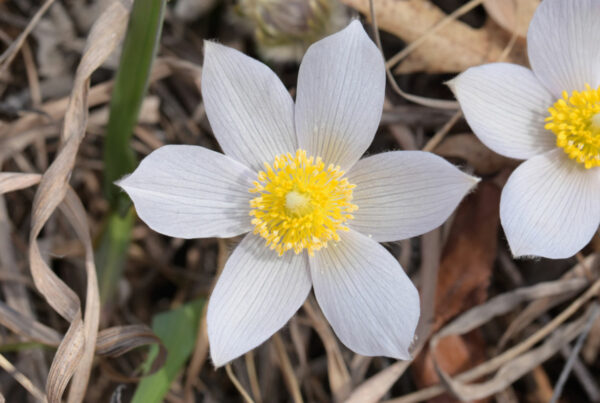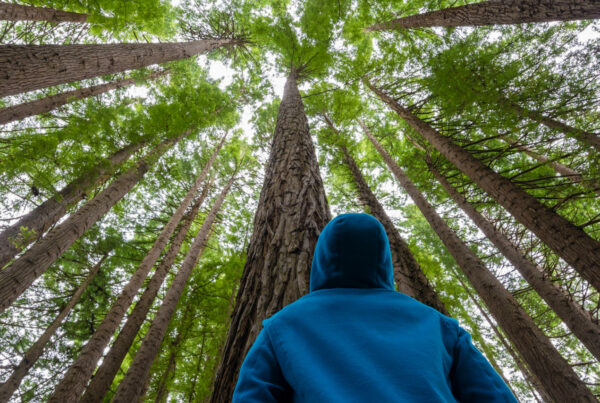Many of the wild plants you pass by regularly while walking outside are edible and have medicinal compounds that can heal the human body.
For thousands of years, traditional cultures from across the world have used medicinal plants for a whole range of health conditions. Even today, most of the therapeutic compounds in modern pharmaceuticals are derived from plants, trees and fungi species.
If you want to learn more about medicinal plants and herbs for healing I’d recommend seeking out teachers and herbalists trained in local First Nations traditions, Traditional Chinese Medicine, Ayurveda or the Doctrine of Signatures.
If you want to learn to start identifying edible and medicinal plants, it’s a good idea to start with these 5 wild plants that grow abundantly throughout BC and Alberta.
Keep an eye out for them on your next stroll in the park or hike in the mountains and you’ll be surprised to see them growing everywhere.
Safety Warning: If you want to learn to forage wild edible plants to eat or for medicinal use, please seek out a local guide or join a local herbalist society so you can learn to do it safely and ethically (plants can only be foraged legally without a permit on public Crown Land in Canada).
Share your plant photos to get help identifying them in the Banff And Canmore Hiking Community or the Vancouver, Squamish And Whistler Hiking Community.
1. Fireweed

Photo Credit: Jason Grant on iNaturalist
Scientific Name: Chamaenerion angustifolium
Season: May – September
Fireweed grows along sunny meadows, roadways and the edges of forests. All parts of Fireweed are edible and different parts are used for salads, garnishes and to make jelly but you need to get them early in the season when the plant is young and fresh.
This medicinal plant is known for its anti-inflammatory properties and antiseptic compounds. It was traditionally used by European cultures and First Nations people in the treatment of colds, cramps, tonsillitis and for preventing infection of wounds.
2. Wild Rose

Photo Credit: Walter Fertigon on iNaturalist
Scientific Name: Rosa acicularis
Season: May – September
As Alberta’s provincial flower (BC’s provincial flower Pacific Dogwood is also highly medicinal), you will find Wild Roses growing abundantly in the Canadian Rockies and the prairies as well as throughout British Columbia from May to September.
All parts of this flowering plant can be used medicinally. It is known to have more vitamin C than oranges and it is also high in A, K and B vitamins. First Nations people make tea and salads from the leaves and use the inner bark to smoke tobacco.
3. Dandelion

Photo Credit: Masha on iNaturalist
Scientific Name: Taraxacum officinale
Season: April – May
Wait, aren’t invasive dandelions weeds? They may be growing everywhere for a reason. Dandelions are the quintessential spring foraging plant because after the long Canadian winters drinking dandelion root tea helps to clean and regulate the blood and lymphatic system.
They have edible and medicinal flowers, leaves and roots. Dandelions are similar in flavour to arugula or radicchio. They have anti-inflammatory, antioxidant properties and help to regulate blood sugar. Avoid them in urban areas where there may be pesticides used on the grass.
4. Mugwort

Photo Credit: Kristina Victoreenon iNaturalist
Scientific Name: Artemisia vulgaris
Season: April – October
Mugwort is often associated in lore and mythology with witches and bubbling cauldrons. It has powerful medicinal properties but it has to be specially prepared otherwise it doesn’t taste very good. It is recommended by doctors that pregnant women should not consume mugwort.
It is probably best known as the dreaming herb as it can be smoked or taken as a tea or tincture to enter into a relaxed meditative state, facilitate lucid dreaming and improve dream recall. It is also great for making infusions that go into baths to calm the nerves.
5. Yarrow

Photo Credit: Donna Pomeroy on iNaturalist
Scientific Name: Achillea millefolium
Season: May – October
Yarrow grows to a few feet tall at maturity, with feathery leaves and flowers that bloom in densely arranged clusters. It is one of the most widely used medicinal herbs today with an extensive list of medicinal properties.
Yarrow contains flavonoids, which are plant-based chemicals that increase saliva and stomach acid to help improve digestion. It is often used to relieve stomach, menstrual cramps and to stop bleeding. It is used by herbalists to stimulate blood circulation and lower blood pressure. It has a pleasant aroma and the leaves and flowers can be steeped in hot water to make herbal tea.
Edible And Medicinal Plants Are Everywhere
The wild plants I have covered here are just the tip of the iceberg. Here is just a few of the other wild plants that are used in traditional medicine systems that you will find growing in BC and Alberta:
1. Northern Sweetgrass (Anthoxanthum hirtum)
2. Big Sagebrush (Artemisia tridentata)
3. Wild Mint (Mentha arvensis)
4. Stinging Nettle (Urtica dioica)
5. Goldenrod (Solidago-canadensis)
6. Bitterroot (Lewisia rediviva)
7. Yellowcress (Rorippa palustris)
8. Marsh Marigold (Caltha palustris)
9. Broadleaf Plantain (Plantago major)
10. Common sunflower (Helianthus annuus)
11. Buffaloberry (Shepherdia canadensis)
12. Sweetvetch (Hedysarum alpinum)
If you have any questions feel free to ask me in the comments or contact me directly.
- Reconnect To Your Original Nature Through Awe And Wonder - April 17, 2024
- Pasqueflower: A Spring Wildflower That Symbolizes Rebirth - April 5, 2024
- Deep Embodiment And The Flow of Embodied Awareness - April 1, 2024



